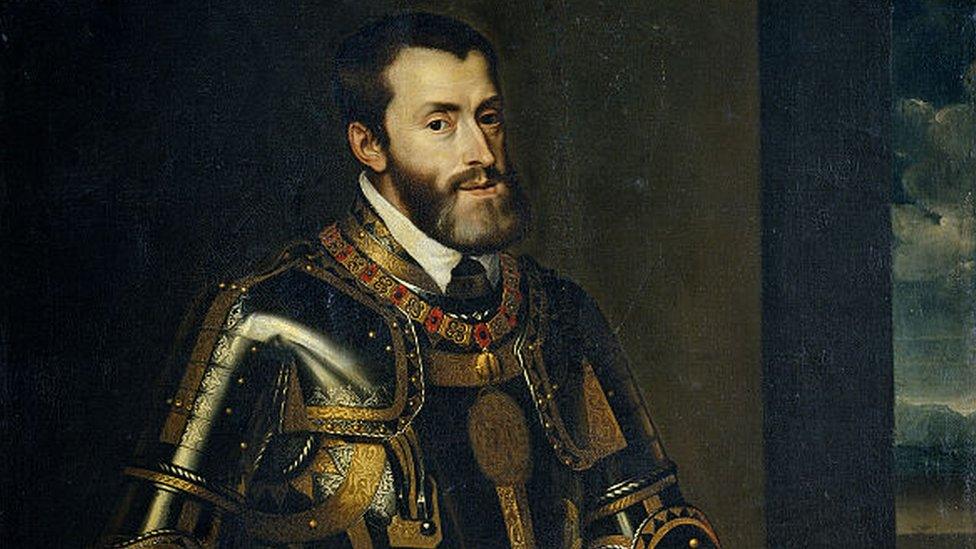The secret spy objects that helped shape the world
- Published

Alice Loxton, holding a prime minister's despatch box from the 1840s, is the presenter of the podcast series
In a room above a central London pub, several innocuous-looking objects rest together on a table.
"Here we have a document holder that was owned by Napoleon," says Shari Kashani, curator of Spyscape, a New York museum dedicated to the world of espionage.
"This is some original animation artwork from the 1954 film Animal Farm... Here we have a record book from the reign of William III - it dates from between 1695 to 1702 and contains all of the secret payments that were made on behalf of the King."
This is definitely not your regular trip to the local.
"Don't worry about touching them," she adds nonchalantly, an instruction that seems rather bewildering when you're handling a 200-year-old artefact that once belonged to one of the most famous figures in history so you can take a better photograph.

Napoleon's briefcase would have been filled with reports, excerpts from letters and other intelligence collated by his secret services
The fact that through the window of the pub is the headquarters of MI6 gives a hint of why we are here - these objects all feature in a new podcast series called A History of the World in Spy Objects, which has been created by the US museum.
For each episode, a different guest picks an item related to espionage that has helped shape the world and then explains why it stands out for them.
"With this podcast we're trying to use these objects; they look so ordinary, they don't really look like spy objects, but we're really trying to bring those to life," explains historian and author Alice Loxton, who presents the series.
Moving along the table, Shari takes a stack of typed sheets from a leather-bound folder that is embossed in metal with the letters "KP".
This, she explains, is a memoir written by notorious double agent Kim Philby after he had moved to Moscow - a man who used to call this very Thameside pub one of his drinking haunts.
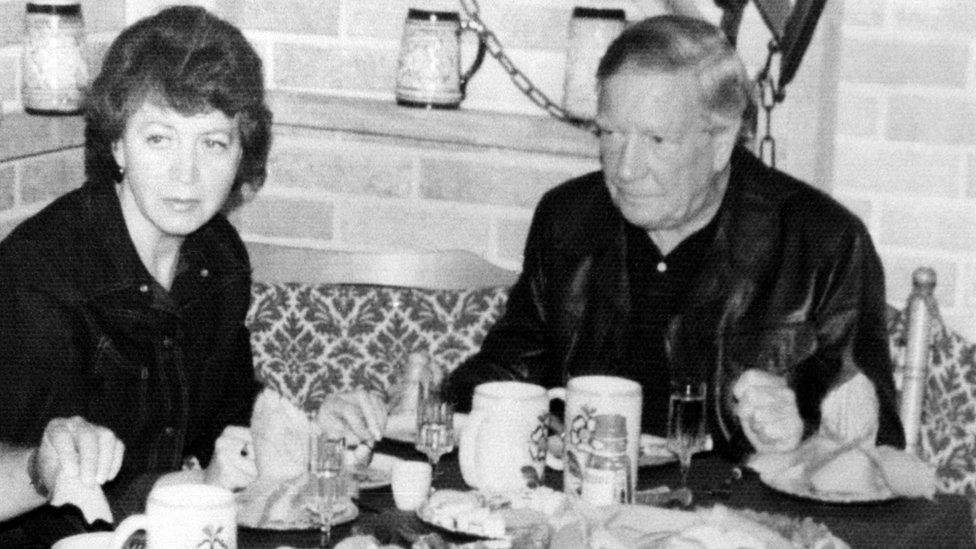
Kim Philby left a note on the back of his memoir intended for his fourth wife, Rufina Pukhova
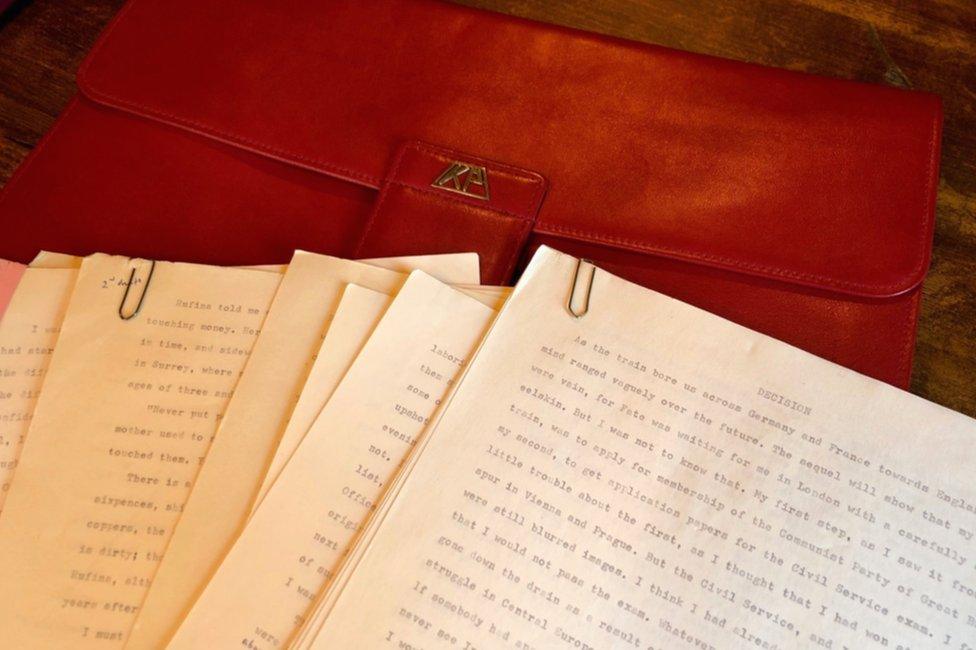
Kim Philby's memoir includes an account of how he was recruited as a Soviet spy in a London park in the 1930s
"This section talks about his very early childhood growing up outside of London. He describes how he was a very lonely child and by the age of five deciding that he didn't believe in God so this early chapter is really a way to justify his decisions later in life."
The pages are littered with the agent's own scribblings, while on the back is a message he scrawled in Russian.
"It's a little note he wrote where he says, basically, if his wife kills him then she would be justified because he's obviously given her a really difficult life in exile," says Shari.
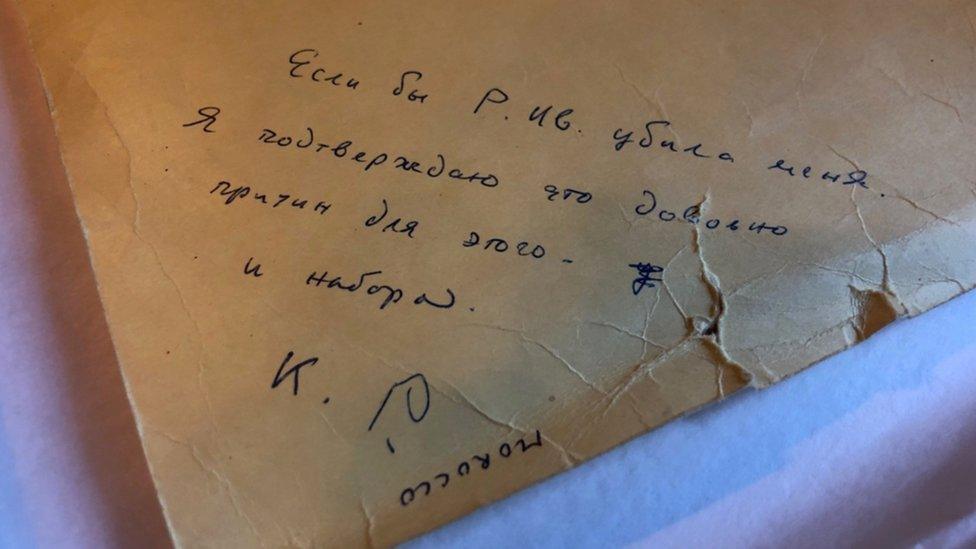
Philby's note reads: "If R. Iv. killed me, I confirm that there are sufficient reasons for this - and vice versa"
The curator adds that the red folder, which was bought from luxury London store Aspley's and comes complete with its original box, is thought to have been sent to Philby while he was in the Soviet Union and in itself tells a story about the infamous spy.
"I think this purchase or gift, we don't know, but this is really also a symbol of all that's gone wrong once he's been exiled, because he's still longing for all these comforts of the mother country," she says.
The items are incredibly varied. Napoleon's briefcase - now successfully photographed - is something the French emperor was handed every morning filled with reports from his notorious intelligence-gathering operation, the Cabinet Noir.
There's a mundane-looking RAF button that would have been sewn on to uniforms of airmen and special agents during World War Two, which, when taken apart, reveals a tiny compass - handy for anyone trapped behind enemy lines.
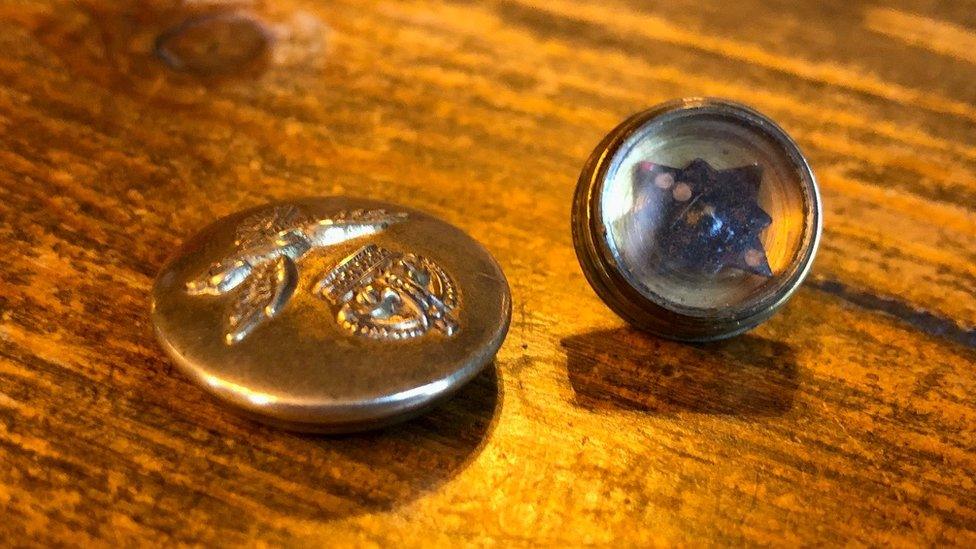
The tiny compass is only revealed when the top of the button is unscrewed
There's also a large red prime minister's despatch box from the 1840s, the decade during which Robert Peel was one of three British PMs, which is believed to have been in use for several decades.
"Inside would have been kept some of the most important secret documents that would have changed events all around the world," Alice says.
"It sounds trite to say but these objects here have really had massive impacts."
The podcast series boasts a diverse range of guests, with actors, designers and artists among those featuring.
Harry Potter star Jason Isaacs pops up to talk about the B2 Stealth Bomber, telling a story about how he got to sit in the cockpit of the top-secret US plane, even managing to record a video while inside it (much to his own amazement).
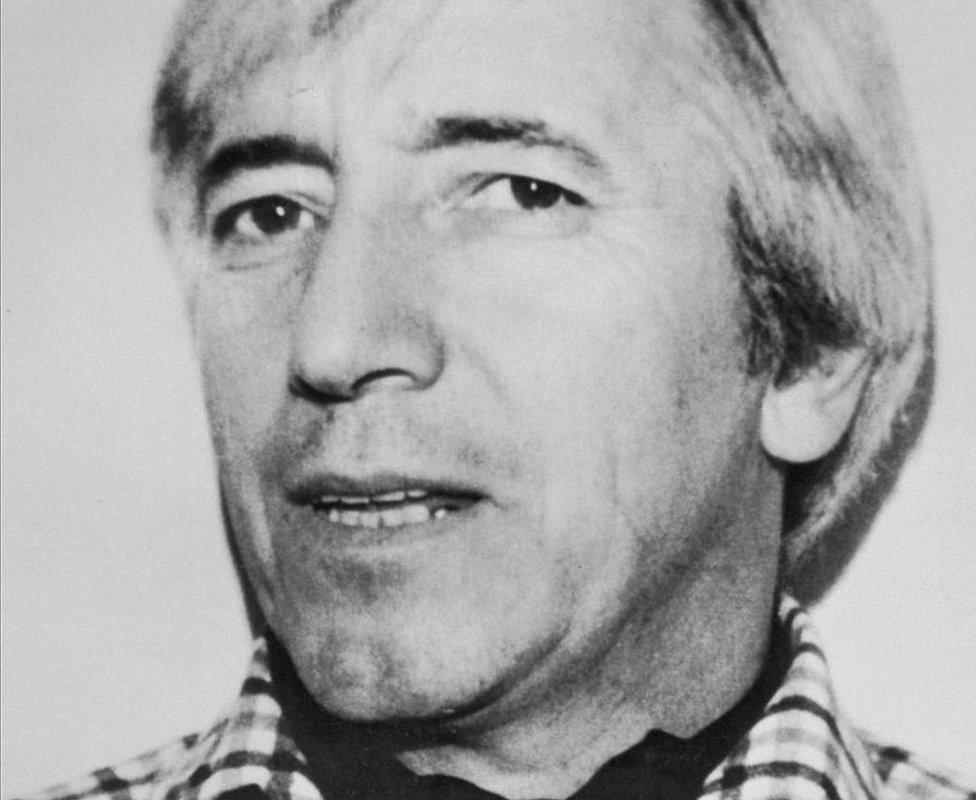
Georgi Markov was 49 when he died of ricin poisoning, four days after being stabbed with the umbrella
Another guest, New Routemaster bus designer Thomas Heatherwick, talks about the poison-tipped umbrella thought to have been used to assassinate Georgi Markov on Waterloo Bridge in 1978, nine years after he defected to the West from Bulgaria.
Describing why he chose the item, the London-based designer explains that he finds it "extraordinary what the inventive mind can come up with to solve a problem, even if that problem is not necessarily something that's better for the world but is something that has this evil purpose".
Alice says the podcast's use of such guests, rather than historians, provides different insights into the items and makes the stories more relatable.
"I think bringing that different angle, and that new perspective, not only brings in wider audiences but also makes it a more rich and interesting conversation," she says.
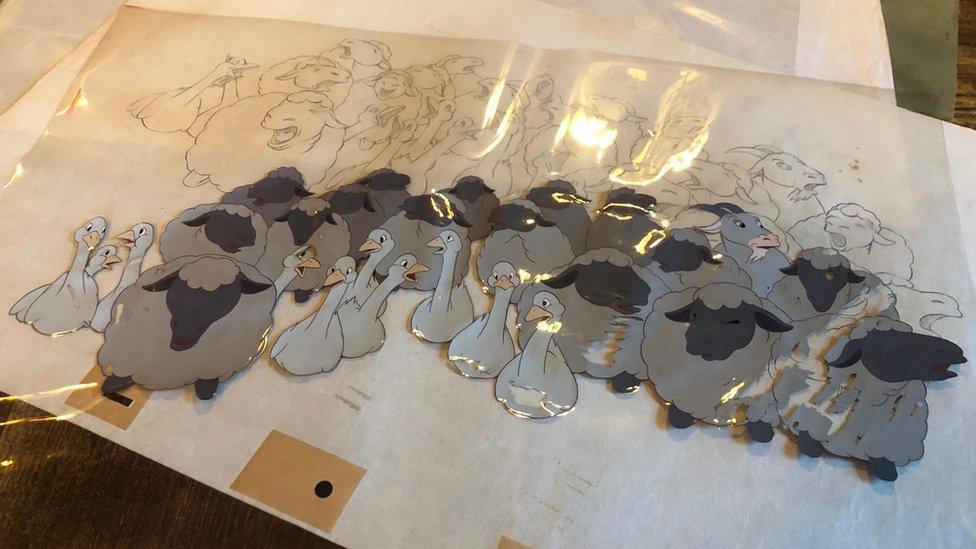
The CIA secretly financed the animation of Animal Farm as part of its efforts to stop the spread the communism during the Cold War
The historian, who boasts more than 1.2m followers on Instagram, adds: "I think we all sort of recognise at the moment that there is this shift in how people are understanding history, how they're experiencing and engaging with history, and you know digital platforms are a big part of that.
"The fact that people... can have these stories told to them whilst they are going about their ordinary lives, it's no longer something which you have the experience of from reading an academic book or going to university. It's something that really is accessible."
The first episodes of A History of the World in Spy Objects, which has been created by Spyscape Studios, external, are available from podcast providers now, with further ones to be released.

Listen to the best of BBC Radio London on Sounds and follow BBC London on Facebook, external, X, external and Instagram, external. Send your story ideas to hello.bbclondon@bbc.co.uk, external
- Published14 October 2023
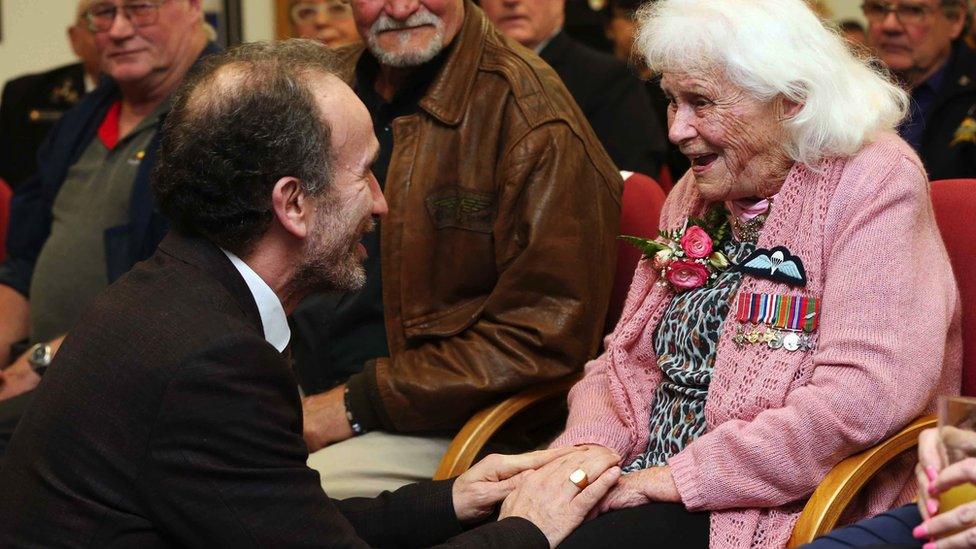
- Published6 June 2023
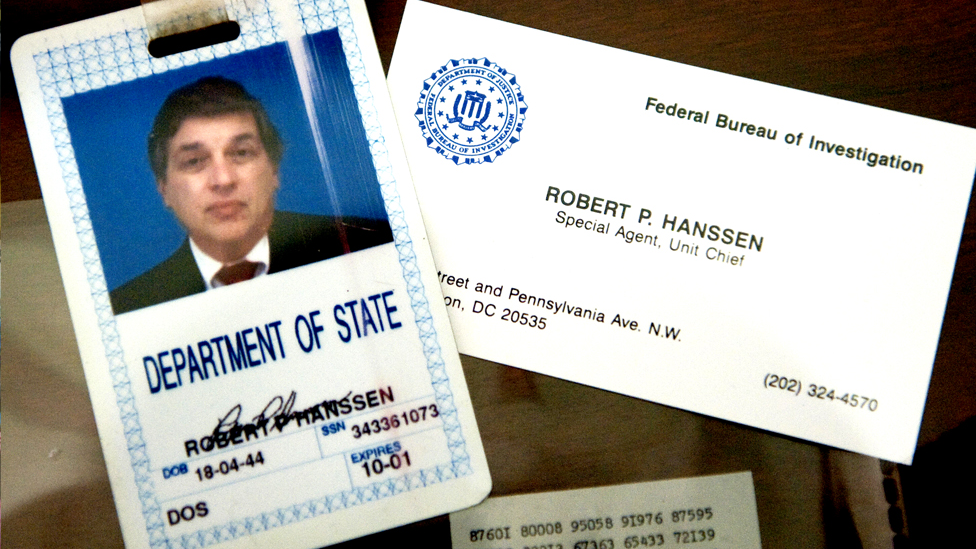
- Published27 November 2022
